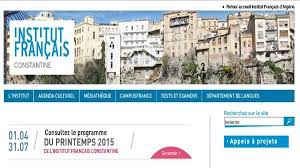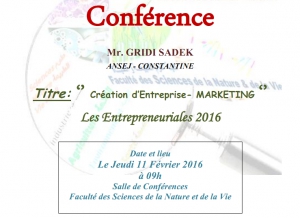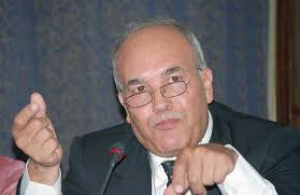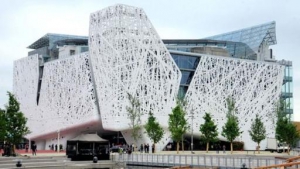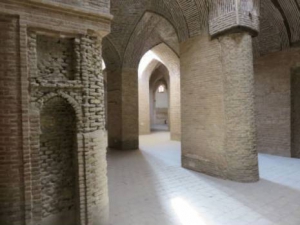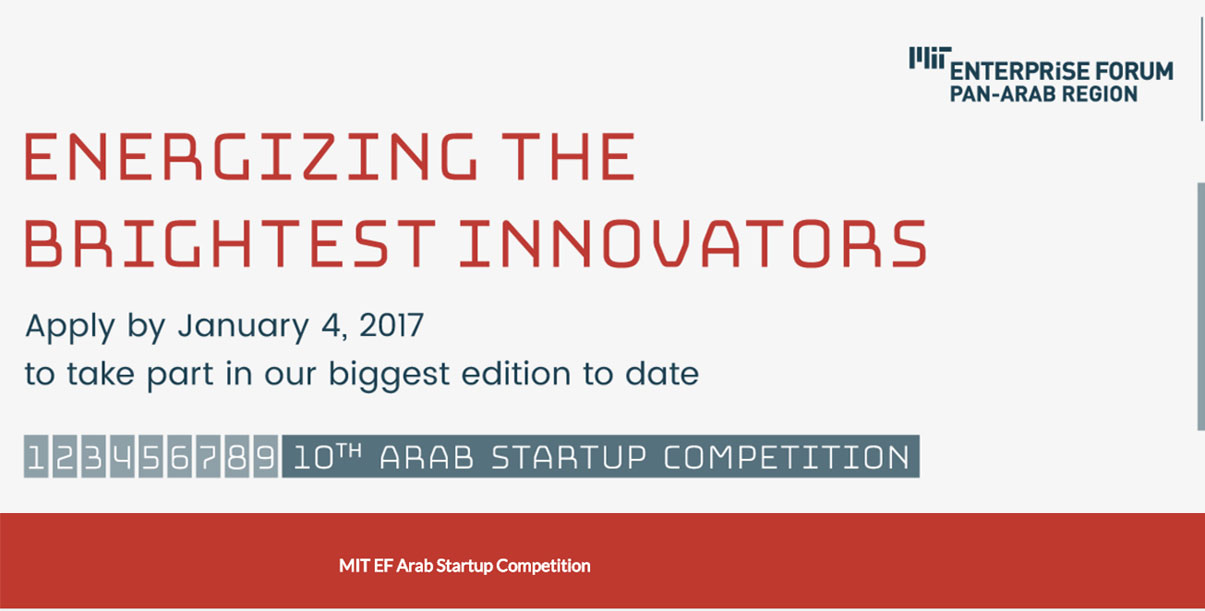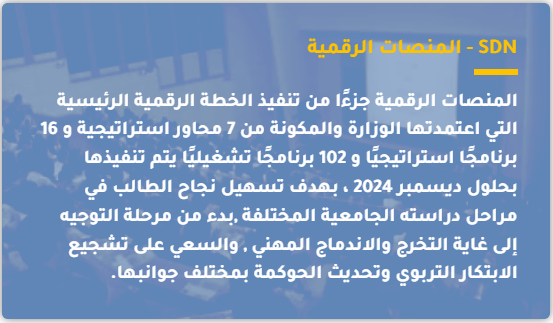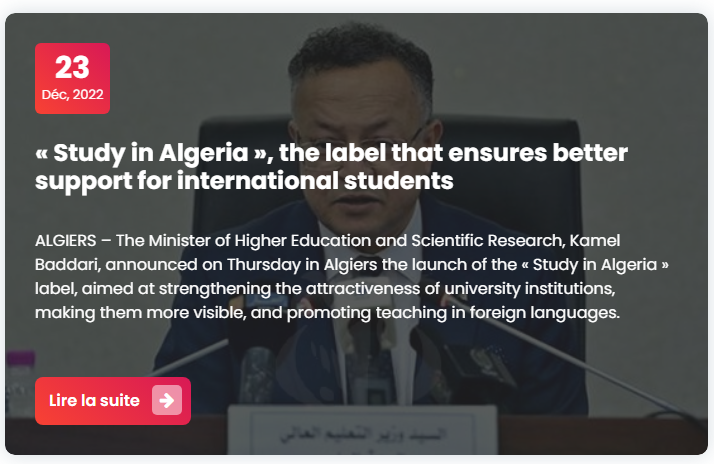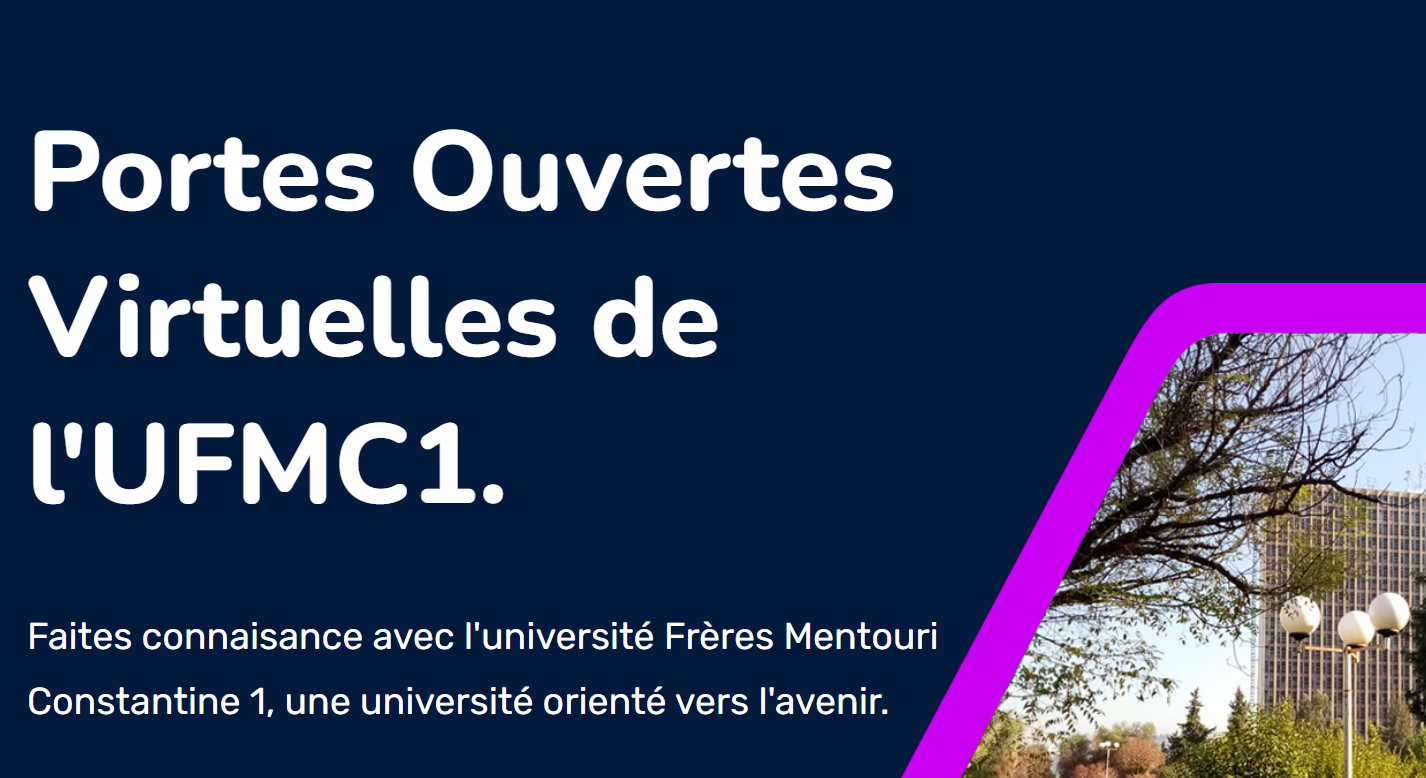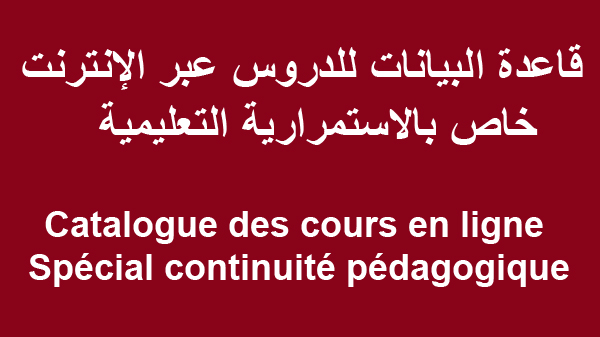Les rendez-vous à venir de Constantine
 |
|||||||
| Les rendez-vous à venir de Constantine | |||||||
|
|||||||
|
|||||||
|
|||||||
|
|||||||
|
Conférence Entrepreneuriat du 30-01-2016
Gaz naturel assurer la transition énergétique
«L’Algérie demeure attachée au principe de partage des risques entre producteurs et consommateurs, pour un développement harmonieux de l’industrie du gaz et au principe de l’indexation des prix de ce dernier sur ceux du pétrole pour les contrats à long terme», tels sont, en substance, les propos du ministre de l’Énergie à l’ouverture des travaux du 5e Symposium de l’Association de l’industrie et du gaz qui se tient à l’hôtel Sheraton du Club des Pins. À cet effet, il a estimé que la conjoncture baissière des prix, observée actuellement sur les marchés pétroliers internationaux, «ne doit pas nous faire douter de l’utilité des contrats de long terme et encore moins de l’indexation des prix du gaz sur ceux des produits pétroliers». Un constat partagé par le premier responsable du groupe énergétique Sonatrach, qui est également président de cette association, et qui a affirmé que «le gaz naturel est l'énergie sur laquelle l'Algérie doit miser à la fois pour subvenir à ses besoins et pour assurer sa transition énergétique». Partant de ce constat, Amine Mazouzi a expliqué que «l'Algérie est un pays gazier et le restera. Le gaz est nécessaire au développement du pays, il y est abondant et permet de réduire les émissions de CO2, ce qui en fait une ressource excellente permettant d'opérer efficacement une transition énergétique», a-t-il déclaré lors de son intervention. Le P-DG a rappelé que le pays dispose d'un potentiel de 16.000 milliards de m3 de gaz conventionnel et de 20.000 milliards de m3 de gaz non conventionnel, et il doit miser sur les nouvelles technologies pour exploiter au mieux cette ressource qu'il a qualifiée de «ressource d'avenir» pour l'Algérie. Un avis partagé par le président-directeur général de Sonelgaz, Noureddine Boutarfa, qui a rappelé les efforts fournis par le groupe public dans la réalisation de projets permettant de faire des économies. Il a signalé, à ce sujet, la décision de faire fonctionner les nouvelles centrales électriques au gaz naturel, ce qui permettra, entre autres, de se passer d'énergies polluantes. Il a annoncé, en outre, que plusieurs investissements visant la modernisation des installations de Sonelgaz seront consentis, avec une enveloppe globale de 1.240 milliards de dinars, à l'horizon 2025. Pour sa part, le consultant international et ancien ministre de l'Énergie Noureddine Aït Laoussine, a affirmé, lors de ce symposium, que la compagnie pétrolière Sonatrach doit faire preuve de plus de «pragmatisme» pour s'adapter aux changements que connaît le marché gazier, notamment en raison de l'arrivée de nouveaux producteurs. «Le déclin des prix du gaz, indexés au pétrole, mais aussi l'arrivée de nouveaux producteurs sur le marché, impose à la compagnie Sonatrach de faire preuve de pragmatisme pour s'adapter à la situation», a-t-il estimé. «Le marché gazier mondial connaît des changements auxquels il faudrait être attentif» Selon lui, la compagnie doit opter pour une politique commerciale plus adaptée à la nouvelle réalité. Il a fait remarquer que le marché gazier connaît des changements auxquels il faudrait être attentif comme, par exemple, la propension des acteurs de ce marché à conclure des contrats à court terme (entre cinq et quinze ans) plutôt qu'à long terme (entre quinze et trente ans), et avec elle la préférence du transport du gaz sous forme de GNL (gaz naturel liquéfié) plutôt qu'à travers les gazoducs. M. Aït Laoussine a noté aussi l'émergence de nouveaux gros exportateurs gaziers, tels que les États-Unis, qui passeront à l'exportation effective en mars prochain, et l'Australie. Si ce dernier pays cible tout particulièrement le marché asiatique en raison de sa proximité, les États-Unis, quant à eux, se concentreront sur l'Europe, marché naturel pour l'Algérie, mais où la demande est actuellement en baisse. «Le Qatar, premier exportateur de GNL, a décidé de vendre son gaz au rabais pour contrer la concurrence future des États-Unis et de l'Australie en Europe et en Asie. La Russie est également prête à vendre à prix réduits pour préserver ses parts de marchés», a-t-il signalé. Selon lui, ces deux pays qui sont les concurrents directs de l'Algérie semblent prêts à déclencher une guerre des prix similaire à celle menée par l'Arabie saoudite pour le pétrole. «L'Algérie doit absolument adapter sa politique de vente et prendre des mesures concrètes telle que le renforcement de son infrastructure d'exportation qui n'est exploitée actuellement qu'à 50%», a-t-il préconisé. La situation est d'autant plus complexe que la demande sur le gaz connaît une certaine baisse en Europe, mais aussi en Asie où le nucléaire et le charbon sont privilégiés, souligne l'intervenant, qui annonce un ralentissement de la demande mondiale plus prononcé d'ici 2020 avec un rythme de progression annuel de 1,5 % contre 2,3 % au cours des dix dernières années. La bonne nouvelle pourrait venir, toutefois, de l'application réelle des résolutions de la COP21 (conférence sur le changement climatique, tenue fin 2015 à Paris), le gaz naturel étant moins polluant pourrait faire l'objet d'une demande qui ira en augmentant à partir de 2020, justement, à condition que les pays respectent leurs engagements en ce qui concerne les émissions de gaz à effet de serre. Un défi qui reste difficile à relever, notera le conférencier. Pour sa part, le président de British Petrolium (BP) pour la région Afrique du Nord, Hesham Mekawi, a annoncé la volonté de cette compagnie de pousser encore plus loin sa coopération avec l'Algérie. Il a annoncé, à cet effet, l'engagement de BP à mettre ses équipements technologiques à la disposition de l'Algérie pour tirer le meilleur parti de l'énorme potentiel dont dispose l'Algérie. «Il n'y a pas de doute sur le fait que la demande mondiale en énergie augmente à long terme et il s'agira de combler cette demande. L'Algérie a un potentiel important en gaz», a-t-il encore dit. Synthèse Amel Z.
Pour dépasser la crise pétrolière l'Algérie dispose des compétences
Le Professeur Abderahmane Mebtoul, économiste et expert international, a estimé hier, à Sidi Bel-Abbès, que l’Algérie dispose des compétences et des moyens hors-hydrocarbures lui permettant d’opérer un changement radical dans sa politique sociale et économique et de dépasser la crise liée à la chute des prix du pétrole. Lors d'une conférence intitulée "L’économie algérienne face aux défis et aux changements énergétiques", donnée à la faculté des sciences économiques et commerciales et de la gestion de l’université Djillali-Liabes, le Pr Mebtoul a souligné que devant le recul des prix des hydrocarbures, il est nécessaire d’adopter une politique pour renforcer la production et la productivité hors hydrocarbures et compter sur le travail et la compétence afin de créer la richesse. "L’Algérie dispose de potentialités touristiques et agricoles importantes qui peuvent contribuer à faire sortir le pays de la crise, si on arrive à bien les exploiter dans la production et la productivité hors-hydrocarbures, et s’orienter ainsi vers une économie productive", a-t-il ajouté estimé. Le professeur a appelé à une rationalisation de la consommation énergétique et à l’exploitation d’autres sources d’énergie renouvelable pour les développer dans les différentes régions, notamment au Sud du pays où d’énormes potentialités énergie solaire notamment existent. Par ailleurs, le conférencier a insisté sur la nécessité de s’appuyer sur toutes les compétences pour accompagner les changements technologiques que connaissent tous les domaines afin de passer de l’économie de la rente vers l’investissement dans tous les domaines générateurs et créateurs de richesses. Il a également souligné la nécessité d’une bonne gouvernance d’une lutte implacable contre la corruption, tout en mettant en exergue l’importance de préserver les réserves multiples du pays. Le Pr Mebtoul s’est montré optimiste quant à l’avenir du pays. "Il est nécessaire d’avoir une vision positive de l’avenir et d’éviter les positions et comportements défaitistes car, l’Algérie dispose de tous les atouts pour créer la richesse hors économie de la rente", a-t-il conc
un batiment innovant capable d'absorber la pollution fait ses preuves en italie
Développé par une entreprise italienne, ce béton capable d’absorber la pollution a été utilisé pour la construction du pavillon italien de l’exposition universelle de Milan. Il a désormais largement fait ses preuves. Développer un matériau innovant et durable, tel est le défi que s’est lancé Italcementi, un groupe italien reconnu comme le cinquième producteur mondial de ciment. C’est au sein de ses laboratoires que la société a vu naître i.active BIODYNAMIC. Ce béton biodynamique a été sélectionné pour revêtir le Palazzo Italia, édifice phare de l’exposition universelle qui s'est tenue à Milan en 2015. Mais il ne s'agit pas d'un matériau comme les autres : il est littéralement capable d’absorber la pollution. Au total, 9.000 mètres carrés de la surface externe du bâtiment italien ont été recouverts de dalles de béton. Ce revêtement blanc unique est composé d’agrégats recyclés et de dioxyde de titane. Il fonctionne grâce à la lumière du soleil via une réaction dite "photocatalytique". Lorsque la structure est exposée aux rayons lumineux, elle capture certaines particules en suspension dans l’air pour les transformer en sels inertes. Nettoyer l’atmosphère Ces résidus sont ensuite débarrassés par le ruissèlement des eaux, dès la première pluie. Ce procédé permet ainsi d’épurer l’atmosphère ambiant en le débarrassant de la plupart de ses polluants. Avec du recul, le béton biodynamique a largement répondu aux attentes des concepteurs du Palazzo Italia. Le pavillon considéré comme une véritable vitrine pour le pays d’accueil, témoigne des avancées en terme de recherche et d’innovation. D'ailleurs, nombre des meilleures entreprises italiennes ont été impliquées dans sa conception. "Le pavillon italien est une opportunité pour nous de renforcer la capacité d'innovation des entreprises et encourager le développement de produits durables et de technologies respectueuses de l’environnement", a expliqué Diana Bracco, présidente de l’Expo 2015. Un bâtiment propre et antipolluant Le résultat est une construction au design aussi unique que son mode de fonctionnement. "Le Palazzo italiano se présente comme une architecture du paysage dans laquelle le bâtiment assume, à travers sa structure et son articulation volumétrique, l'apparence d'un arbre-forêt, où les visiteurs peuvent se plonger et vivre une expérience émotionnelle", poursuit la présidente. Les cabinets d’architecture Nemesi & Partners et Proger BMS Progetti, à la base du projet, expliquent ainsi avoir imaginé un édifice qui "respire" à la manière d’un organisme vivant. Le pavillon dispose d’ailleurs d’une autosuffisance énergétique assurée par différentes sources d’énergies propres comme des verres photovoltaïques. Contrairement à d’autres pavillons des pays participants, celui de l’Italie perdurera dans le temps. Son architecture et son mode de construction devraient même pouvoir inspirer à l’avenir de nouvelles générations d’édifices durables pour participer activement à l’élaboration de centres urbains plus propres.
Premier Salon de l’optique
Le premier Salon de l’optique et de la lunetterie se tient demain à Constantine jusqu’au 20 février à l’hôtel Marriott. Cette première édition de l’est dédiée aux professionnels de l’optique réunira les fabricants de verres, importateurs, distributeurs, grossistes et représentants de firmes et marques internationales.
RH. International Communication, agence spécialisée dans la communication événementielle annonce que ce Salon accueillera des techniciens de la santé, des ophtalmologues, opticiens étudiants.
Les visiteurs découvriront toute une gamme de lentilles de contact, les nouvelles collections de montures de lunettes optiques et solaires ainsi que le matériel et outillage. Une journée professionnelle aura lieu le 20 février et le docteur Messadi Abdelkader, ophtalmologiste, abordera quant a lui le thème des lentilles de contact chez l’enfant.
l'historiographie de l'architecture islamique revisitée
A deux mois de la clôture de l’événement culturel «Constantine, capitale de la culture arabe», l’université Mentouri a été encore une fois sollicitée pour laisser son empreinte dans la plus grande manifestation culturelle de l’année.
Les 15 et 16 février, c’est la faculté d’architecture et d’urbanisme (Constantine 3) qui a été sous les feux de la rampe avec l’organisation d’un colloque international sur l’architecture islamique. «L’ambition des organisateurs est de conforter les regards sur les conceptions de l’histoire de l’architecture islamique, tout autant que les architectures produites d’inspiration locale prescrites dans deux périodes, celles coloniale et postindépendance», explique Nabiha Bemaati, membre du comité d’organisation, enseignante et chef du département de management de projets.
Pourquoi ce thème et pas un autre ? Plusieurs organisateurs reconnaissent un choix imposé. Le thème de ces deux journées, qui ont comptabilisé 30 communications, a été formulé par le ministère des Affaires religieuses et des Wakf.
Le département d’architecture s’en est emparé pour présenter un type d’architecture largement connu même des profanes, mais en s’appuyant sur un travail de terrain. Toutes les bonnes volontés étaient les bienvenues. Et le club scientifique n’a pas été en reste ; il n’a pas démérité et a fait montre d’un enthousiasme palpable en se lançant dans cette préparation collégiale qui a abouti à une exposition de maquettes et de photos sur le thème de l’architecture islamique.
Pour un meilleur encadrement du colloque et une maîtrise du thème, le comité d’organisation, certainement par souci d’éthique et d’objectivité, a largement balisé les contenus des communications et des ateliers. «La notion d’architecture islamique renvoie à la production artistique développée sous la domination musulman entre le VII et XIXe siècles. La richesse et la diversité — maison, palais, caravanserail, médersa, bain — qui illustre l’architecture islamique a interpellé les voyageurs, les archéologues et les historiens. Les études historiques, présentées sous forme de monographies, de synthèses et d’essais, visaient la connaissance des dimensions formelles, ornementales, constructives et symboliques de l’art islamique en général», a-t-on laissé entendre.
Et de développer que «ces dimensions ont évolué de la définition des variations de style et des spécialités régionales vers la reconstruction des processus de fabrication et de gestion des édifices».
Fait inédit, les communications étaient originales et non déjà publiées. Le comité d’organisation a mis un point d’honneur à inciter à l’innovation. Les sujets des interventions — une autre condition observée — ont été en lien étroit avec les thématiques et les axes du colloque. Le pivot de ce dernier est structuré autour de quatre axes : l’historiographie de l’architecture islamique, les pratiques et les productions architecturales en situation coloniale, les pratiques architecturales contemporaines et les influences patrimoniales locales et enfin leçons de l’architecture traditionnelle dans la conception environnementale.
IDENTITÉ OU HÉRITAGE ?
«L’historiographie produite à travers le temps dépasse largement la connaissance de la réalité de cette production architecturale pour orienter les regards vers l’héritage islamique et les pratiques architecturales», peut-on saisir de certaines communications à travers lesquelles des experts ont mis en exergue les aspects et l’étymologie inhérente à cette architecture qui a transcendé le temps. «Au XIXe siècle, les conditions politiques, sociales et économiques de certains pays ont influencé les formes architecturales.
La prise de conscience occidentale des traditions architecturales et de l’effacement des particularités ont entraîné une réinterprétation du patrimoine local et un renouvellement du processus de production. Entre les XXe et XXIe siècles, il ya eu un regain d’intérêt pour cette catégorie d’architecture qui s’affiche davantage à travers la construction de bâtiment emblématiques. L’appropriation des références patrimoniales locales s’apparente à une restructuration identitaire.
Pour certains intervenants, la question identitaire, devenue une préoccupation majeure pour certains pays, se traduit en outre par l’architecture. Certains maitres d’œuvres qui se référent à l’architecture islamique dans la conception des édifices nouveaux sont fortement encouragés. Leurs contributions prolongent les réflexions sur la durabilité par la pratique constructive, et la gestion intelligente des facteurs environnementaux.» Nadir Bouhrour, chef du département d’architecture et membre du comité d’organisation nous a confié que «la préparation de ce colloque a duré un an», ce qui renseigne sur l’implication des différents partenaires pour que ce conclave soit couronné de succès.
D’où la sollicitation des architectes de terrain. «Nous avons demandé à des architectes de terrain d’apporter leur contribution pour une vulgarisation de la thématique», a affirmé Mme Benmaati. Son collègue N. Bouhrour abonde dans le même sens en rappelant que son département «dispense un mastère en architecture islamique». La thématique leur est donc familière et a été portée à bras le corps par la faculté d’architecture et d’urbanisme qui, comme son nom l’indique, abrite un troisième département, celui du management de projets.
Et c’est un véritable voyage qui s’est offert au public, composé d’étudiants. De la Turquie au Maroc, des joyaux architecturaux ont été décortiqués sous la loupe de spécialistes venus du pourtour méditerranéen. Plusieurs monuments ont été présentés en tant qu’objets d’étude ou de réhabilitation, à l’exemple de la mosquée Hassan Pacha d’Oran, du palais Mustapha Pacha d’Alger, des pavillons des officiers d’Alger ou des maisons traditionnelles de Constantine.
Naima Djekhar
Concours Cirta Science: Début des épreuves vendredi prochain
C'est parti pour le nouveau concours scientifique annuel qui est lancé auprès des lycées de la wilaya par l'association « Sirius » d'astronomie. La première étape de « Cirta Science VIII », ou huitième édition de ce concours populaire qui commence à susciter beaucoup d'engouement chez nos potaches, est fixée pour ce vendredi 19 février à 09h à la maison de la culture Malek Haddad de Constantine. Elle verra concourir plus de 600 lycéens des trois niveaux provenant des 55 lycées de la wilaya. Les candidats ont été sélectionnés suivant leur moyenne au premier trimestre de la présente année scolaire, explique le professeur Djamel Mimouni, le président de Sirius, dans un communiqué envoyé hier à notre rédaction. « Cette première étape du concours, lit-on dans ce communiqué, devrait permettre de sélectionner 3 lauréats dont le prix est une visite scientifique en Angleterre, intitulé « Sur les traces de Newton », au Trinity Collège, à l'Université de Cambridge et à l'observatoire de Greenwich. Signalons que ce concours se déroule sous le patronage de M. le Wali de Constantine, en coordination étroite avec la direction de l'Education de la wilaya et qu'il est organisé avec le soutien de l'APC de Constantine. Les noms des trois heureux lauréats seront annoncés le 16 avril 2016, lors de la célébration de la journée de la science, en présence de personnalité » scientifiques algériennes et étrangères. Rappelons que les éditions précédentes de ce concours ont conduit les trois lauréats, à partir de 2008, à visiter des sites scientifiques de haut niveau mondial, comme le centre spatial européen à Amsterdam et Cologne, à observer la plus longue éclipse totale du siècle à partir de la ville de Shanghai en Chine, en Afrique du Sud, sur le plateau de Sutherland, pour visiter le plus grand télescope du monde, aux Iles Canaries pour visiter aussi le grand télescope installé sur ces îles, au Japon pour visiter le grand radiotélescope de Nobeyama et le Mont Fuji, en Suisse, au Centre européen de recherche nucléaire (CERN) pour visiter le plus grand accélérateur de particules du monde, là où fut découverte la particule de Higgs, et à l'observatoire de Haute-Provence, en France, où fut détectée la première exoplanète (planète située hors du système solaire).
La maison d'Entrepreneuriat de l'université des frères Mentouri de Constantine
La maison d'Entrepreneuriat de l'université des frères Mentouri de Constantine
Founded in 2005, the MIT Enterprise Forum of the Pan Arab Region (www.mitefarab.org) is one of the 28 worldwide chapters of the MIT Enterprise Forum Global, an avid promoter of entrepreneurship and innovation worldwide. The MIT Enterprise Forum- Pan Arab has a proven record in promoting MIT-style entrepreneurship by organizing each year the MIT Enterprise Forum Arab Startup Competition targeting 21 countries of the Arab region and attracting over 12,000 entrepreneurs a year.

L’Algérie compte des dizaines de pôles universitaires repartis sur l’ensemble du territoire national, au sein desquels sont dispensés des enseignements dans diverses spécialités, à 1.300.000 étudiants.
Ce riche potentiel mérite d’être mobilisé pour une participation active au développement économique et social du pays.
Dans cette perspective, la voie qui s’impose de plus en plus, s’avère être la création d’entreprises.
Le dispositif de l’ANSEJ se positionne comme le mécanisme idoine à même d’assurer l’articulation entre le monde du savoir et de la connaissance et le monde de l’économie et de la création de richesse.
Il n’échappe à personne que l’entrepreneuriat est un champ particulier qui n’est pas comparable avec l’enseignement académique traditionnel.
La promotion de l’esprit d’entreprendre apparait comme une nécessité pour susciter l’intérêt des étudiants à la création d’entreprise, notamment dans le secteur des technologies de l’information et de la communication.
La maison de l’entrepreneuriat est l’outil fondamental sur lequel s’appuie l’ANSEJ pour sensibiliser les étudiants et les initier à l’acte d’entreprendre en partenariat avec les Universités et les Grandes Ecoles.
La maison de l’entrepreneuriat, c’est quoi ? et d’abord, pourquoi le choix du terme « maison » ?
Le mot « maison » se démarque de celui de centre ou d’institut qui renvoient beaucoup plus à des structures académiques, d’enseignement traditionnel.
Le mot maison évoque une structure conviviale, où l’ambiance est agréable et propice à l’échange d’idées et au développement de l’esprit d’initiative.
Fonctions de la maison de l’entrepreneuriat
La première fonction de la maison de l’entrepreneuriat est donc la sensibilisation à l’entrepreneuriat. Elle a pour but d’activer l’intention entrepreneuriale des étudiants à travers des programmes de sensibilisation et de diffusion de la culture entrepreneuriale.
La deuxième fonction de la maison de l’entrepreneuriat consiste dans le pré-accompagnement des étudiants et des chercheurs porteurs d’idées de projets.
Cette fonction permet de préparer les étudiants à franchir le pas vers la création de leur propre micro-entreprise, à travers le dispositif de l’ANSEJ.
Activités de la maison de l’entrepreneuriat
Les actions réalisées par la maison de l’entrepreneuriat s’appuient sur un programme annuel décliné ainsi :
journées d’information et de sensibilisation, à caractère général ;
journées d’études organisées par faculté ;
universités d’été : cursus sur la création d’entreprise, avec la participation des partenaires de l’ANSEJ ;
tables rondes thématiques ;
modules sur la démarche entrepreneuriale et le business plan ;
concours des meilleurs business plan.
Organisation de la maison de l’entrepreneuriat
L’organisation de la maison de l’entrepreneuriat s’articule autour d’un comité de pilotage comprenant, un directeur universitaire et deux animateurs dont un enseignant universitaire et un accompagnateur de l’ANSEJ.
Généralisation du concept
La première maison de l’entrepreneuriat a été créée, en 2007, à l’université de Constantine.
L’année 2014 a connu la généralisation du concept de maison de l’entrepreneuriat, au niveau des universités et des Grandes Ecoles, à travers le territoire national.
Partenariat
Des passerelles sont jetées entre les maisons de l’entrepreneuriat et d’autres organismes d’aide aux projets innovants (parcs technologiques, incubateurs, cellules de valorisation des résultats de la recherche et du développement technologique), pour la création d’un maillage territorial favorisant et accompagnant une dynamique de développement local.
Du nouveau à la Formation professionnelle
En prévision de la rentrée du 28 février, en cours, la direction de la Formation professionnelle de Constantine a initié, depuis hier, et pour trois jours durant, des portes ouvertes' sur le secteur pour faire connaître les opportunités de formation offertes dans ses 22 établissements de la wilaya.
Cette manifestation d'information et de sensibilisation, se déroule dans le hall du Palais de la Culture Al Khalifa'. Concernant ce qui est offert par son secteur et surtout les nouvelles filières enseignées, selon le mode de l'apprentissage, la directrice de la Formation professionnelle dira que cela a trait à deux domaines, à savoir ceux de l'Industrie mécanique et de l'agriculture, dont les enseignements seront donnés à l'Institut spécialisé de Zarzara et ce, en attendant l'ouverture de l'Institut national spécialisé dans l'Agriculture, implanté à Ain Abid. Alors que la 2ème nouveauté concerne la réhabilitation et la rénovation du vieux bâti, dont la formation se fera à l'Institut de Zarzara. Et notre interlocutrice d'indiquer, dans ce cadre, que depuis le début des inscriptions, soit le 24 du mois de janvier dernier, et jusqu'à maintenant, plus de 1.019 nouveaux inscrits ont été enregistrés, représentant plus de 20% des postes pédagogiques offerts, et l'opération se poursuivra jusqu'au 20 du mois en cours. Et d'indiquer, encore, que les inscriptions peuvent se faire, ici même, au Palais de la Culture Al Khalifa', auprès des différents stands aménagés pour cette opération et où les nouveaux candidats ont la possibilité de déposer leurs dossiers.
Expliquant que cette disposition a été prise dans un souci de rapprocher le citoyen des offres de formation. Et de rappeler, toujours dans le sillage de ce rapprochement, que parallèlement à la tenue de ces portes ouvertes', une caravane composée de cadres et d'employés du secteur est en train de sillonner les douze communes de la wilaya, pour le même but d'information et de sensibilisation des citoyens aux formations dispensées par les 22 CFPA et Instituts spécialisés de la wilaya.


